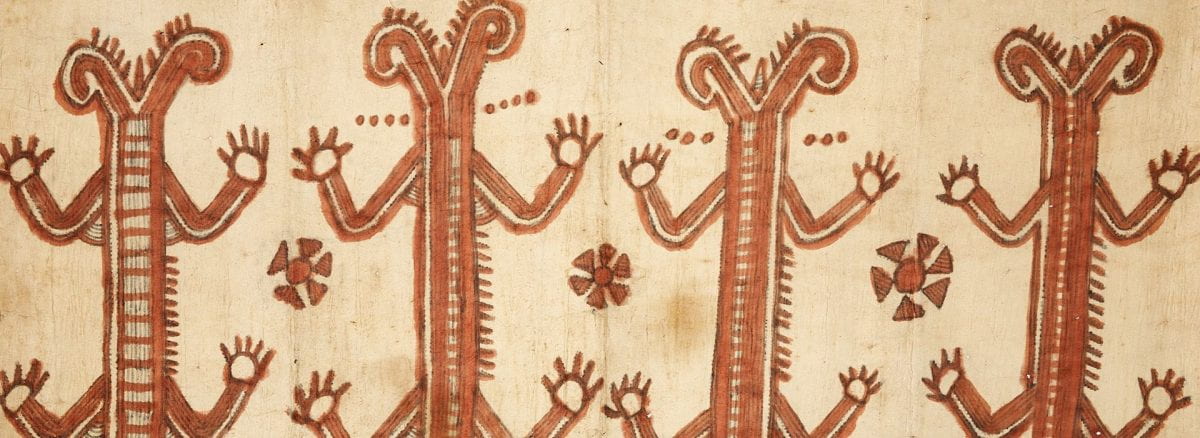For cultures living on the islands of the Pacific Ocean, “tapa,” or cloth made from the inner bark of various trees, is considered a second skin. In Papua New Guinea, tapa is used for everything from wrapping cloths for infants to daily wear for men and women to wrappings for the deceased. Tapa also plays a role in rituals marking important occasions and decorates objects of power. Since most cultural groups involved with making and using tapa in Papua New Guinea have little connection with one another, tapa production is varied and culturally specific.

This visually striking barkcloth is a woman’s hip wrapper, or “embobi,” possibly made by the Maisin peoples of Oro Province of Collingwood Bay in eastern Papua New Guinea. The long rectangular textile is worn wrapped around the hips, secured by a girdle made of looped fibers and shells, and covers the knees and thighs. The cloth is made from the paper mulberry tree, pounded into a single sheet with a natural adhesive.
Decorated textiles such as this example are primarily made by women using free-hand painting. Abstract and geometric patterns are associated with plants and animals emblematic of spiritual forces that control hunting, gathering, warfare, gardening and rites of passage. Specific designs are the property of different clans and family groups. The design on this textile most likely represents a crocodile, a powerful symbol.

